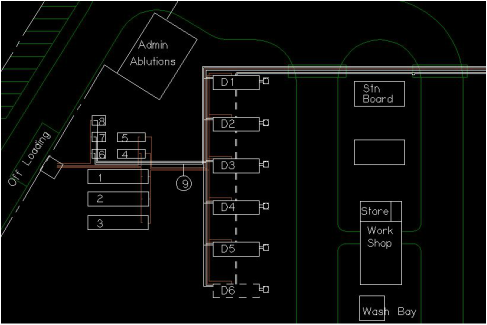N+1 and N+2 are terms commonly seen when describing a power station planting.
So what do these terms mean?
Disclaimer:
Firstly, it is important to note that the meaning of these terms are often defined in contracts, so they can have different meanings from contract to contract. The meanings of the terms presented here are of a general nature. For the purpose of this discussion, we will ignore the effect of large motor drive starting loads or other special circumstances that might impact selection of generator sizing or the number installed.
Where is it used?
The term “N+1” applies to off-grid or remote power stations such as power stations that supply remote towns or mines which are not connected to the power grid or any other power station. The term doesn’t make a lot of sense in the context of a grid connected power station. This will become apparent in the discussion below.
So what do these terms mean?
Disclaimer:
Firstly, it is important to note that the meaning of these terms are often defined in contracts, so they can have different meanings from contract to contract. The meanings of the terms presented here are of a general nature. For the purpose of this discussion, we will ignore the effect of large motor drive starting loads or other special circumstances that might impact selection of generator sizing or the number installed.
Where is it used?
The term “N+1” applies to off-grid or remote power stations such as power stations that supply remote towns or mines which are not connected to the power grid or any other power station. The term doesn’t make a lot of sense in the context of a grid connected power station. This will become apparent in the discussion below.
| 1. An example of N+1 For the purpose of this description, we will describe N+1 and N+2 in the context of supplying power to a remote mine. For simplicity, we will assume that the power station comprises generators that are all of equal size. In this instance, the letter “N” represents the number of generator units that are required to run in order to meet the maximum demand of the mine, plus any stipulated spinning reserve. For example, if the maximum demand at our hypothetical mine was 8 MW, and we were installing generators with a net output of 2MW at site rated conditions, and a minimum spinning reserve of 500 kW was required, then the number of generators, N, required to meet this load would be 5. If the planting requirement was N+1, then the minimum number of generators required to be installed would be 5+1 = 6. | 2. What is the purpose of specifying N+1 or N+2? From the example above you can see that the “+1” or “+2” requires that the power station holds one extra generator for N+1, or two extra generators for N+2, above that required to meet the maximum demand plus minimum spinning reserve. In the case of N+1, this means that if one generator unit is out of service, either planned or unplanned, then the remaining units should still be able to meet the maximum demand of the load plus minimum spinning reserve. So there is no shortfall of power. N+1 or N+2 planting specifications are therefore addressing the risk of not being able to meet maximum demand. N+2 mitigates that risk even further than N+1, at the cost of having to install an extra generator. |
| 3. Other Considerations N+1 or N+2 is a starting point, not the end point, of generator planting considerations. There are many other factors that can influence the selection of generator type, size and quantity for a given project. The nature of the load has a major influence. The size of step-load changes and the size and nature of motor starts and stops can all have a major influence on the generator selection. | 4. Conclusions We have provided a basic description of the use of N+1 and N+2 terminology in generator planting. It is a starting point when considering the number of generators to be used in a remote off-grid power station application. However there are other technical and commercial factors that will affect the final design and may override any basic N+1 or N+2 basis. Seek the advice of experienced power plant designers when considering the application or interpretation of these terms. Of course, at WAPGC can help you with your power plant designs and contracts. WA Power & Gas Consulting. Energy Consultants. Power Consultants and Gas Consultants. Perth Western Australia. |

 RSS Feed
RSS Feed
